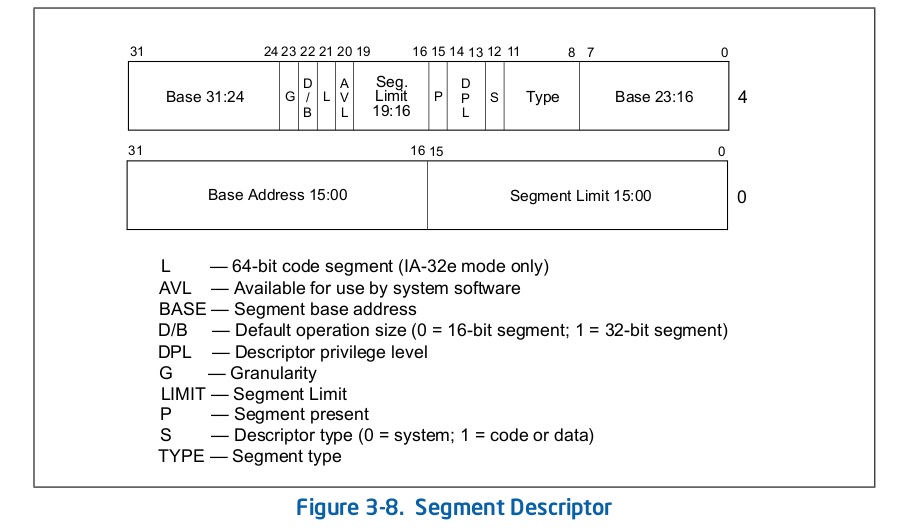Example: Segmentation
This example models an x86 segment descriptor, an in-memory data structure.
Description
The following figure depicts the segment descriptor from the Intel 64 and IA-32 Architectures Software Developer’s Manual.

Segment Limit Is a 20-bit value, concatenation of the two fields in the descriptor.
- If
G == 0then size is incremented in one byte granularity (1--1MByte) - If
G == 1then size is incremented in 4k granularity (4k--4GBytes)
Base Address Is a 32-bit value, concatenated of the two fields in the descriptor. Alignment is ideally on a 16-byte boundary.
DPL Privilege Levels, value of 0-3.
Type If S == 1 then bit 11 defines whether its
- data (
0), writable (bit 9 == 1), or read-only (bit 9 == 0) - code (
1), readable (bit 9 == 1), or execute-only (bit 9 == 0) Bit 8 indicates the accessed flag.
If S == 0 this is a system-segment and gate-descriptor. Let's ignore that for now.
S Flag indicating whether this is a system segment (S == 0) or code/data (S == 1).
P Indicates whether the segment is present or not. If P == 0 translation results in exception.
D/B Should always be set to 1 for 32-bit code.
Unit Specification
Editable field to fill in the spec. Does not save
unit X86SegmentDescriptor(..) {
..
}